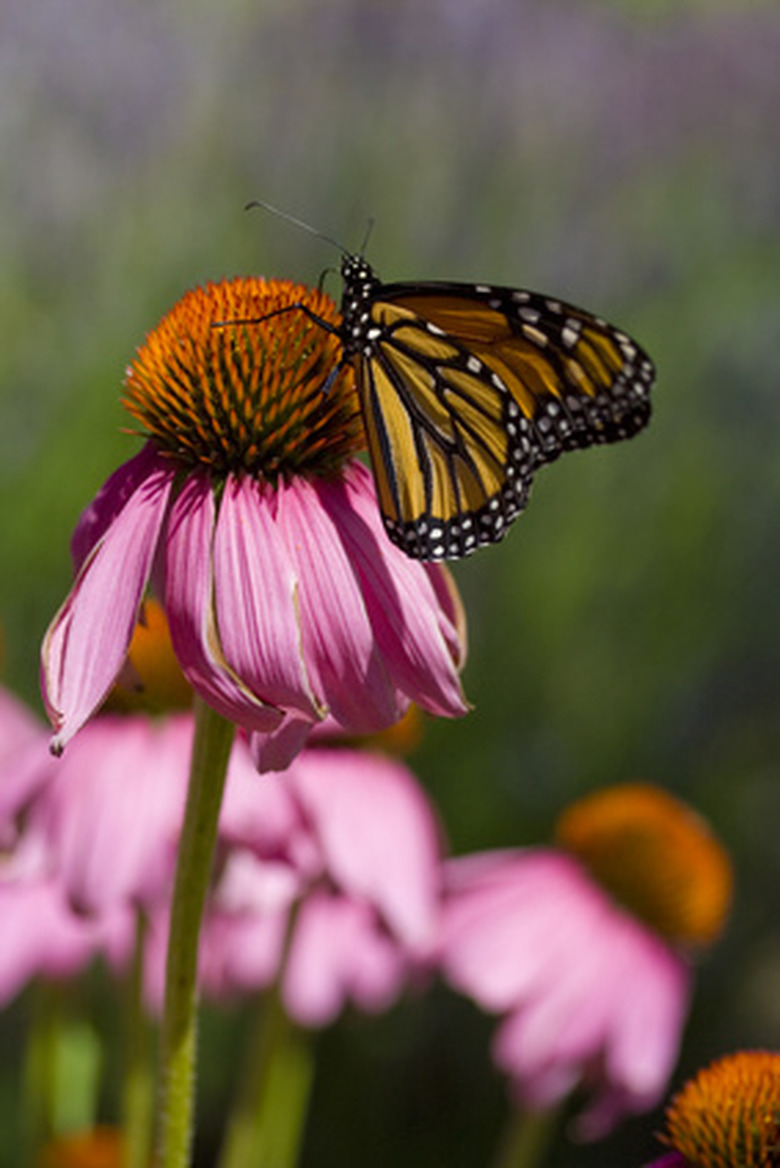How To Grow Year Round Medicinal Herbs For Zone 9
Things Needed
- Compost
- Shovel
- Trowel
- Hoe
- Sprinkler
- Diatomaceous earth (optional)
- Iron phosphate (optional)
- Fertilizer
The lowest winter temperature you can expect in USDA climate zone 9 is 25 degrees F, and it doesn't often drop that low in cities such as Houston, Texas and St. Augustine, Florida. Zone 9 also includes desert regions of the Southwest, including Las Vegas and Phoenix. The hot, dry conditions and porous, sandy soil in zone 9 are conducive to many medicinal herbs, such as lavender, echinacea, vitex, wild yam, saw palmetto and many others. On the other hand, some medicinal herbs require cool winters: you won't have success growing herbs such as ginseng in zone 9.
Step 1
Prepare a planting area in a sunny spot. Spread a 2-inch layer of organic compost over the area and then turn it under, mixing it with the topsoil to a depth of about 8 inches.
Step 2
Dig planting holes with your trowel that are slightly larger than the rootball of potted medicinal herb plants. If you are planting seeds, make furrows in your prepared area with a hoe and then sow seeds the correct depth and distance apart, following seed packet instructions.
- The lowest winter temperature you can expect in USDA climate zone 9 is 25 degrees F, and it doesn't often drop that low in cities such as Houston, Texas and St. Augustine, Florida.
Step 3
Water the area well by running a sprinkler for 20 to 30 minutes. If you know that snails or slugs are a problem in your garden, scatter diatomaceous earth or iron phosphate granules over the area after you water.
Step 4
Fertilize your medicinal herbs about one month after you plant them with a balanced plant food with an N-P-K ratio of 10-10-10. Use compost or worm castings as fertilizer if you want your medicinal herbs to be strictly organic.
Step 5
Protect any potentially frost-tender medicinal herbs if the forecast for nighttime temperatures is into the 30s. Cover your plants with floating row cover or simply prop a blanket or tarp over them. Remove it in the morning after the temperature rises.
- Water the area well by running a sprinkler for 20 to 30 minutes.
- Use compost or worm castings as fertilizer if you want your medicinal herbs to be strictly organic.
Tip
Most herbs thrive in poor soil and rocky areas in the wild; create growing spaces for your medicinal herbs that are similar to their native environments. Group together plants with similar water and nutritional needs so it's easier to take care of each plant correctly. Mulching with organic compost will benefit medicinal plants because it will keep the soil moist and cool in the very hot summers of zone 9.
Warning
When you cover plants with a blanket or tarp, support it to prevent it from touching your plants because frost on the cover can damage them.
